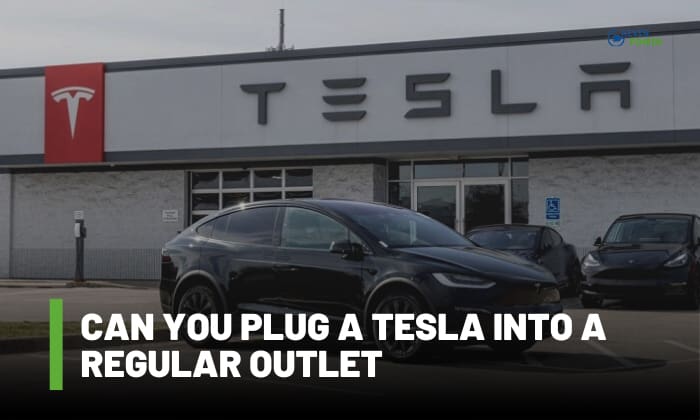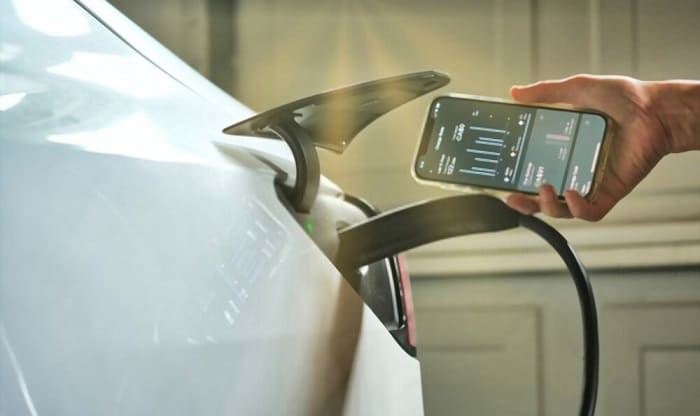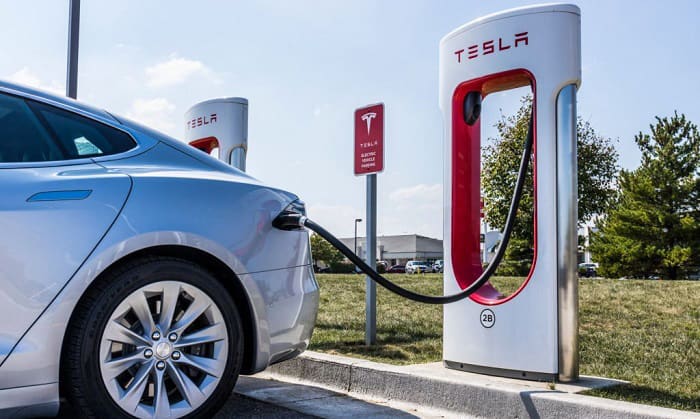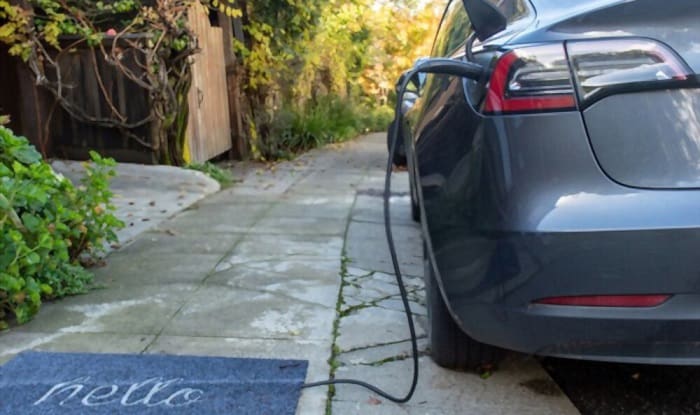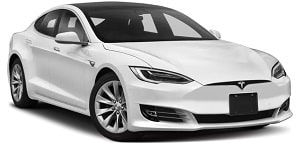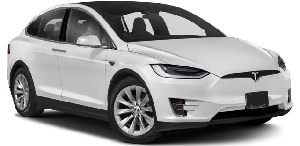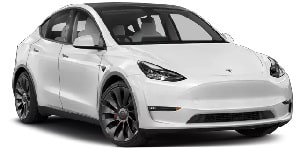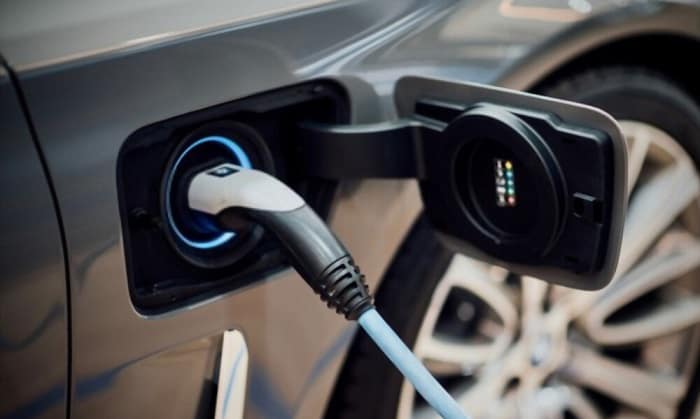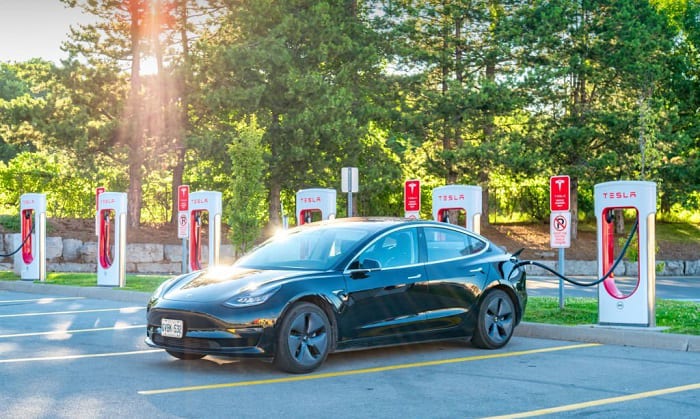Perhaps, you’re now a proud owner of a new Tesla. But now you’re asking, “Can you plug a Tesla into a regular outlet?”
Tesla cars generally come with a Type C/F adapter. Users can use this coupling module to plug the vehicle into a regular outlet.
Tesla owners should still be wary about certain elements before doing this, however. So, keep reading to gain additional insight into this subject matter.
Table of Contents
Charging a Tesla With a Regular Wall Outlet
As mentioned previously, you don’t need a special outlet to charge a Tesla. But using different home outlets can vary the time and costs associated with charging a Tesla.
Different Volt Outlets to Charge Tesla
Different Tesla home charging options are available. Users can plug the vehicle into different receptacles with varying voltage ratings.
Here are the ratings of the charging station by type.
- Level 1: Standard 120-volt outlets (provides 2 to 3 miles per hour)
- Level 2: 208- to 240-volt outlets (provides about 30 miles per hour)
- Wall connector: 240V, up to 44 miles per hour
- Level 3 or DC Fast Charging: 480-volt or higher fast chargers (provides about 44 miles per hour)
Most homes will use a level 1 or 2 outlet, while level 3 is mostly available at commercial charging stations. You may also hire an electrician to install a wall connector.
Time to Charge a Tesla With a Regular Outlet
It can take an hour to 12 hours to charge a Tesla into a wall outlet, depending on the power going into the electric vehicle. The amount of time to complete the charging process can also depend on the Tesla’s battery.
For instance, using a Tesla Model 3 power outlet to charge this vehicle’s 262-mile capacity battery may take about 8 to 9 hours using 240 volts or a Level 2 charger.
You can use the Tesla NEMA 14-50 charger in a regular outlet for this purpose.
Using a Level 1 charger (or a NEMA 5-15), on the other hand, may take anywhere from 87 to 131 hours to power that vehicle from 0% to 100%.
Meanwhile, with the help of a Tesla supercharger, the total time for a Tesla Model 3’s battery to reach full capacity is about 6 hours. With a wall connector, the waiting period is slightly longer, around 9 hours.
As for other models, you can consult the table below for the charging times based on the Tesla charger outlet used:
| Tesla model | NEMA 5-15 (Level 1) | NEMA 14-50 (Level 2) | Wall Connector | Supercharger (Level 3) |
| Model Y | Not recommended, as it would take days to finish charging | 10 to 11 hours | 7 to 8 hours | About one hour |
| Model S | 17 to 18 hours | 12 hours | More than one hour | |
| Model S plaid | 22 hours | 15 hours | One hour | |
| Model X | 19 hours | 12 hours | More than one hour | |
| Model X plaid | 17 to 18 hours | 11 to 12 hours | More than one hour |
How Much Does It Cost to Charge a Tesla in an Outlet?
Tesla users should expect to spend about $13.96 to fully charge their electric vehicles. But the total cost can depend on certain factors, including the Tesla charging time and the per-kWh electricity rate of your area.
For example, it can be less expensive to charge an electric car with a regular outlet in Colorado than in Hawaii. In particular, charging a Tesla Model S in Colorado might require users to spend about $0.12 per kWh.
On the other hand, Tesla users in Hawaii may need to pay approximately $0.30 per kWh for their electric vehicles.
The overall rate may also depend on the charger’s location, mainly whether you’re going to use a Tesla charging home outlet or power the battery on the go. For instance, Tesla’s charging stations with a Supercharger will cost 26 cents per kWh on average.
The model can also play a role in affecting the costs to charge Tesla. The following tables are estimates of the possible costs associated with powering different Tesla vehicles:
1. Model S Trim Charging Costs
| Type | Charging Level | Cost per 100 Miles |
| Long Range | Level 1 and 2 | $4.00 |
| Level 3 | $6.40 | |
| Plaid | Level 1 and 2 | $4.10 |
| Level 3 | $6.60 |
2. Model X Trim Charging Costs
| Type | Charging Level | Cost per 100 Miles |
| Long Range | Level 1 and 2 | $4.50 |
| Level 3 | $7.20 | |
| Plaid | Level 1 and 2 | $4.70 |
| Level 3 | $7.60 |
3. Model Y Trim Charging Costs
| Type | Charging Level | Cost per 100 Miles |
| Long Range | Level 1 and 2 | $3.70 |
| Level 3 | $6.00 | |
| Plaid | Level 1 and 2 | $4.00 |
| Level 3 | $6.40 |
Tips to Charge a Tesla
Following Tesla charging recommendations can help ensure the electric vehicle’s optimal longevity and performance. Here are some tips to help charge your Tesla correctly:
- Choose the right charger. Although you can use third-party accessories, using a certified Tesla wall connector can provide peace of mind.
- Use the Trip Planner to find a Supercharger site. This built-in feature can help you search for the nearest Level 3 station if you need a quick ‘refuel’ for the vehicle.
- Take advantage of trickle charging. Although it’s slow, you won’t need to do major renovations for your home’s electrical wiring to power your Tesla.
- Upgrade to a Level 2 charger. If you have the extra cash, take advantage of Tesla charging at home 220v outlets for a shorter waiting time between drives.
- Charge overnight. Tesla recommends vehicle users charge their electric cars while sleeping to prevent running out of mileage while on the road.
Frequently Asked Questions
Can I Plug My Electric Car Into A Regular Outlet?
Most electric vehicles, including all Tesla models, can use a standard home outlet for charging. However, you should still consult your owner manual about certain limitations and risks when plugging the electric vehicle into a regular outlet.
Can A Tesla Plug Into A 240v Outlet?
Using a Tesla 240v outlet is an ideal approach to adding mileage to the vehicle. Make sure you’re using the 240V NEMA 14-50 outlet that should come with your Tesla or a similar third-party plug.
How Much Does It Cost To Install A 220V Outlet For Tesla?
Property and Tesla owners should expect to spend approximately $500 if they want to plug their electric vehicles into a 220v outlet for charging. This overhead may include the parts and services needed to complete the installation.
Can I Use A Model 3 Charger For Model Y?
If purchased from a reliable source, each Tesla Model 3 and Y should have a CCS Combo 2 (CCS2) hybrid charging port. That means that if you have a Tesla Model Y power outlet, particularly that variant, you should be able to use it with a Model 3.
Conclusion
After reading this post, you should now have an answer to the question, “can you plug a Tesla into a regular outlet?” Despite its flexibility for its usage, charging a Tesla vehicle at a home outlet can have varying time spans and costs.
Also, following proper electric vehicle charging protocols is essential to ensure that no harm will come upon your Tesla while you’re adding mileage to it. Failure to do so may also shorten its battery capacity or bring other types of harm to the vehicle.

I am Edwin Jones, in charge of designing content for Galvinpower. I aspire to use my experiences in marketing to create reliable and necessary information to help our readers. It has been fun to work with Andrew and apply his incredible knowledge to our content.

